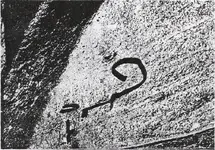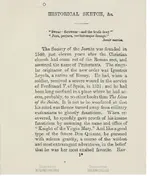- #1
Thread Owner
"Aztec" mystery symbol
Just curious if anyone has seen a symbol like this before or has any idea what it might mean. Some of you might recognize it because it ran in a treasure publication with a story. I'm just curious what people who might not be influenced by the story might have seen or think about the symbol. Story goes there are 11 of these bad boys scattered throughout the midwest. Your help is appreciated...
Just curious if anyone has seen a symbol like this before or has any idea what it might mean. Some of you might recognize it because it ran in a treasure publication with a story. I'm just curious what people who might not be influenced by the story might have seen or think about the symbol. Story goes there are 11 of these bad boys scattered throughout the midwest. Your help is appreciated...




 !
!



